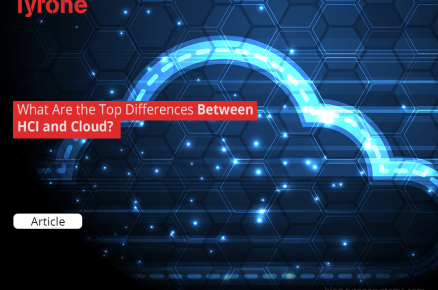1. Introduction: The Evolution of E-commerce
Over the years, e-commerce has transformed the way businesses operate, providing a convenient and accessible platform for customers to shop online. With the advent of advanced technologies and the rise of virtualization, e-commerce businesses have witnessed remarkable growth and success.
2. Understanding Virtualization
Virtualization involves creating virtual versions of physical resources, such as servers, storage devices, or networks. It allows multiple virtual instances to run on a single physical infrastructure, enabling efficient resource utilization and enhancing scalability.
3. Benefits of Virtualization for E-commerce
3.1 Improved Scalability and Flexibility
Virtualization enables e-commerce businesses to scale their operations seamlessly. With virtual machines and containers, additional resources can be provisioned or scaled down based on demand. This flexibility ensures that online businesses can adapt to fluctuating customer needs and handle increased traffic without any disruptions.
3.2 Enhanced Resource Utilization
By consolidating multiple virtual instances on a single physical server, virtualization optimizes resource utilization. This results in cost savings and improved efficiency for e-commerce businesses. It eliminates the need for maintaining separate physical servers for each application or service, reducing hardware costs and energy consumption.
3.3 Cost Savings
Virtualization helps e-commerce businesses save costs on hardware, maintenance, and infrastructure. By utilizing virtual machines, businesses can achieve higher server densities, reducing the need for purchasing and managing additional physical servers. This cost-effective approach allows businesses to allocate their budget towards other critical areas such as marketing and customer experience enhancement.
3.4 Increased Security and Reliability
Virtualization enhances the security and reliability of e-commerce systems. By isolating applications and services within virtual environments, potential vulnerabilities and risks are contained, reducing the impact of any security breaches. Additionally, virtualization enables easy backup and disaster recovery strategies, ensuring business continuity and minimizing downtime.

4. Implementing Virtualization in E-commerce
There are several approaches to implementing virtualization in e-commerce. Here are three key areas where virtualization can be utilized:
4.1 Infrastructure Virtualization
Infrastructure virtualization involves creating virtual instances of servers, storage, and networks. By virtualizing the infrastructure, e-commerce businesses can optimize resource allocation, increase flexibility, and simplify management.
4.2 Application Virtualization
Application virtualization allows applications to run in isolated environments, decoupled from the underlying operating system. This approach eliminates compatibility issues and enables seamless application deployment, updates, and maintenance.
4.3 Desktop Virtualization
Desktop virtualization, also known as virtual desktop infrastructure (VDI), provides a virtualized desktop environment for users. E-commerce businesses can leverage VDI to enhance employee productivity, enable remote work, and ensure data security.
5. Overcoming Challenges in Virtualization
While virtualization offers numerous benefits, there are certain challenges that e-commerce businesses need to address:
5.1 Performance Optimization
As e-commerce businesses scale, ensuring optimal performance becomes crucial. Proper capacity planning, resource allocation, and monitoring are essential to maintain a high-performing virtualized environment.
5.2 Data Security and Privacy
Virtualization introduces new security considerations. E-commerce businesses must implement robust security measures to protect sensitive customer data and ensure compliance with data protection regulations.
5.3 Training and Skill Enhancement
Virtualization technologies require specialized skills to manage and maintain effectively. Organizations should invest in training their IT teams or consider partnering with virtualization experts to ensure smooth operations and address any technical challenges.
Future Trends in Virtualization for E-commerce
As technology advances, virtualization for e-commerce is expected to evolve further. Some future trends to watch out for include the integration of virtualization with artificial intelligence (AI) for intelligent resource allocation, the rise of edge computing for faster online transactions, and the emergence of containerization as a lightweight virtualization solution.

Conclusion
Virtualization has emerged as a game-changer for e-commerce businesses, offering improved scalability, cost savings, and enhanced security. By leveraging virtualization technologies such as infrastructure, application, and desktop virtualization, online businesses can optimize their operations, adapt to changing customer demands, and scale effectively in the competitive e-commerce landscape.
FAQs
- How does virtualization benefit e-commerce businesses? Virtualization benefits e-commerce businesses by improving scalability, enhancing resource utilization, reducing costs, and increasing security and reliability.
- What are the key challenges in implementing virtualization for e-commerce? Some key challenges include performance optimization, data security and privacy, and the need for training and skill enhancement.
- How can e-commerce businesses overcome performance issues in virtualized environments? E-commerce businesses can overcome performance issues through proper capacity planning, resource allocation, and monitoring.
- Is virtualization suitable for small e-commerce businesses? Yes, virtualization can benefit small e-commerce businesses by providing scalability, cost savings, and improved efficiency.
- What are the future trends in virtualization for e-commerce? Future trends include the integration of virtualization with AI, the rise of edge computing, and the emergence of containerization as a lightweight virtualization solution.











